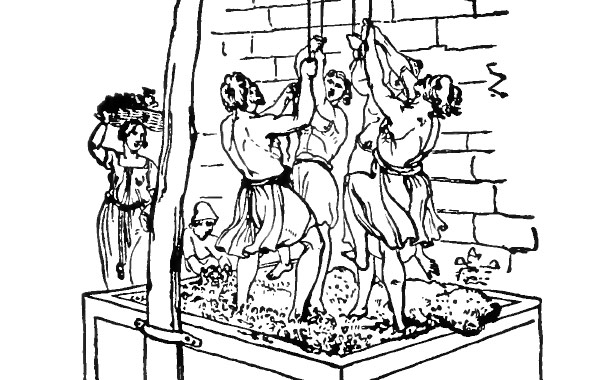<![CDATA[An archaeological team from the Israeli Antiquities Authority has found a compound in Ramat Bet Shemesh, nineteen miles west of Jerusalem, which researchers believe once housed a Byzantine era monastery. They also found evidence that these monks pressed wine and oil for a living. The archaeologists discovered the site while surveying the hills and land south of Bet Shemesh. During the survey they noticed a cave opening, the tops of several walls and some cisterns. The people that inhabited this area are thought to have been affluent, living there before the seventh century. The team of archaeologists found that the compound was well organized with a strong outer wall. The indoor area was divided into a living space and an industrial room. In the industrial room was a well-preserved press that the inhabitants used to make oil. In another area of the compound was a winepress that contained two floors: one where the workers crushed the grapes with their feet to extract the juice, and another where the juice was collected in a large vat. The residential area had several rooms, with some having earth-tone mosaics on the floor. In one room, there was a stairway that led to the second floor of the house, although unfortunately the upper floor has been destroyed. There were mosaics in all of the rooms, which portrayed different things such as a cluster of grapes, flowers, and geometric shapes. In another section of the compound, the researchers found two ovens, which were most likely used for baking bread. The size of the oil press and the winepress shows that the inhabitants produced oil and wine for a living, not only for their own consumption. Archaeologists believe the site was a monastery, even though they haven't found any religious artefacts, inscriptions or a temple. Their assumption is based on the architecture of the compound, the era in which it was used, the mosaic floors, artefacts in the windows, the roof tiles, and other clues. These characteristics are all akin to other monasteries from the period. When the Byzantine period came to an end in the seventh century, the inhabitants may have deserted the premises and new residents occupied the area. The new inhabitants kept much of the area intact, but used the compound to suit their needs. It is unclear whether or not the later residents continued the use of the winepress and oil press. This is just one of several recent studies that have shown how affluent citizens in the area lived and conducted their business throughout history. Last year, a 10,000 year old cultic temple was discovered in an area west of Jerusalem. Later that year, the same team found the remains of a wealthy estate dating back to the late tenth and early eleventh century, complete with a garden and a fancy mosaic fountain. The Ramat Beth Shemesh compound is currently going through the process of being deemed an archaeological landmark by the Israeli authorities. It is planned for a neighbourhood to be built around the site.]]>
Ancient Monastery Doubled as Winepress
